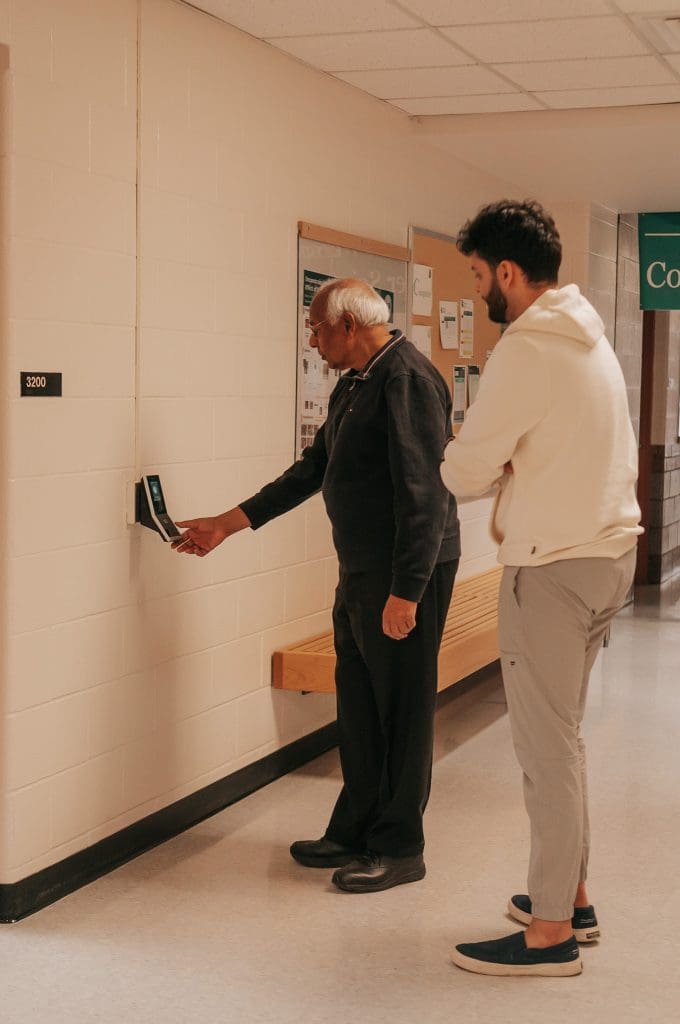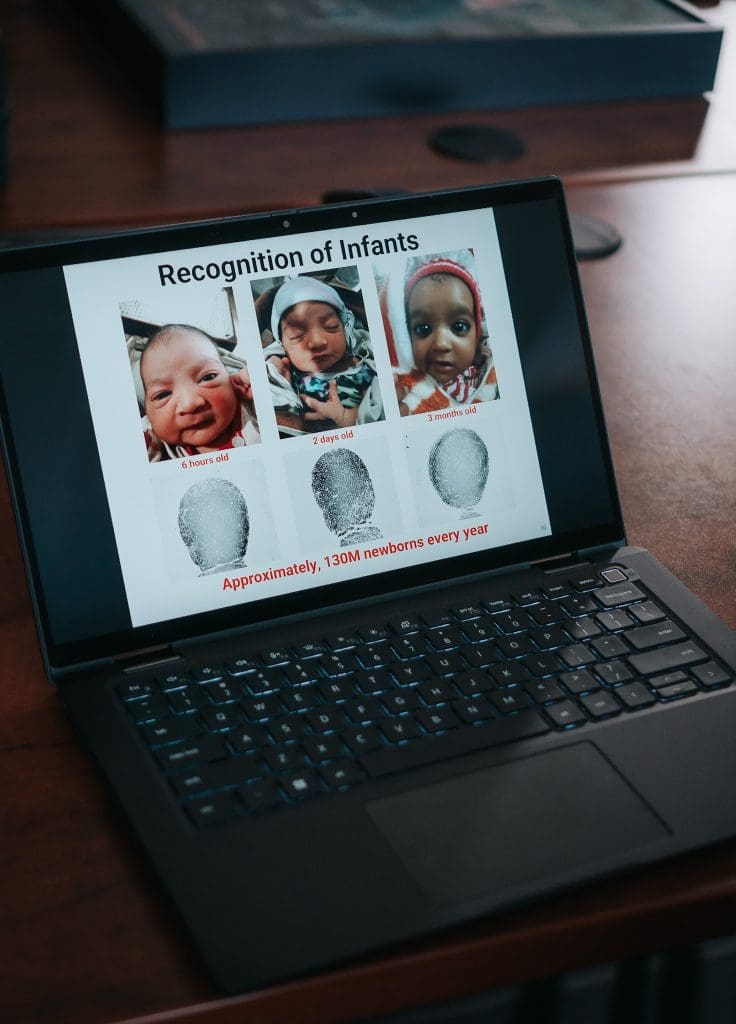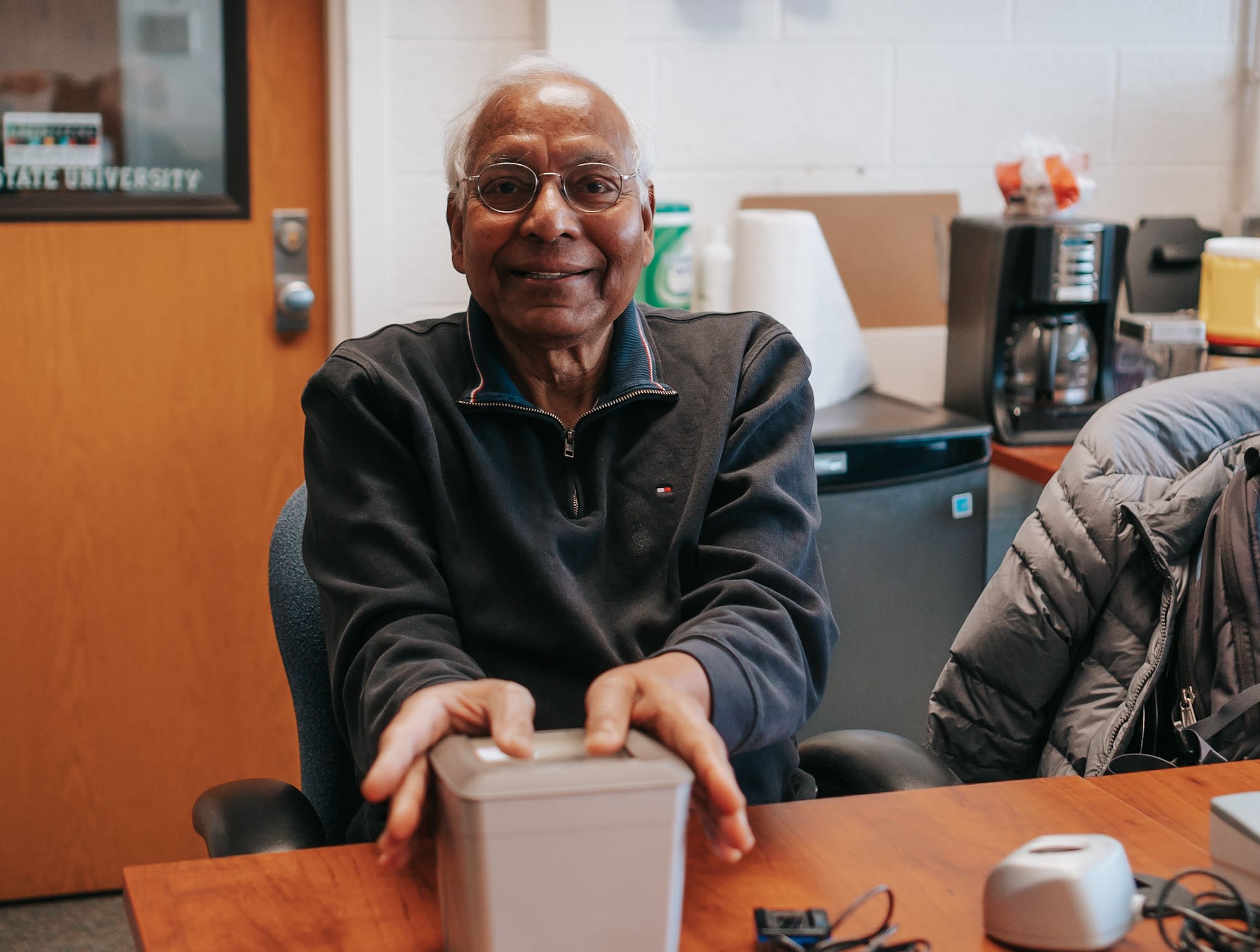Biometrics, or the recognition of individuals by means of unique physical characteristics, such as fingerprints, have been used in law enforcement for over 100 years. “The whole idea of biometric recognition is to use your body characteristics, either fingerprint, face, voice or the iris of the eye, to define your identity,” said Anil Jain, University Distinguished Professor with the Michigan State University (MSU) Department of Computer Science and Engineering.
In 2013 Apple launched its first mobile phone with a new feature called Touch ID. Now, instead of entering a numeric pin, you could simply put your finger on the home button to unlock your phone. Since then, the use of biometrics for security purposes has risen rapidly, especially in the field of consumer electronics.
 Jain noted the rising use of biometric fingerprint scanners in our everyday lives, pointing out, “If you go to the Meijer supermarket in this area, you will see that every cashier has a fingerprint reader, and that is basically for the cashier to login when they first arrive to their shift.”
Jain noted the rising use of biometric fingerprint scanners in our everyday lives, pointing out, “If you go to the Meijer supermarket in this area, you will see that every cashier has a fingerprint reader, and that is basically for the cashier to login when they first arrive to their shift.”
Jain’s research on biometrics at MSU started over three decades ago. His initial research, starting in 1974 when he joined MSU, was in the field of automated analysis of satellite and medical images when he was approached by the National Security Agency to find a civilian use for a newly developed computer hardware technology, known as a Field Programmable Gate Array (FPGA).
Utilizing the new FPGA architecture, Jain believed he could speed up two of the most commonly used image analysis operations, namely image enhancement and keypoint correspondence determination in a pair of images. Like stereo imaging, where there is a left image and a right image, keypoint correspondences are used to derive the depth information from 2-dimensional images, Jain recounted, “and then we said, ‘where will we get the key points?’ And somebody in my group said, ‘Oh, fingerprints!’ because fingerprint matching is essentially based on point matching; fingerprints have something called minutiae points. If you see any CSI type of crime show on tv, you will notice that’s how you determine whether two fingerprint images are impressions of the same finger. And we showed that by using the new FPGA processor, we could speed up the point matching by 100 times compared to the conventional CPU on a Sun3/50 workstation popular at the time in 1993. And that opened up new opportunities for us.”
Over the next 30 years, Jain focused his career on the science of biometrics, working with companies like IBM, Siemens, Infineon, Lumidigm, NEC, Morpho, Cogent, ZK, Goodix,
and other companies worldwide. His greatest sense of accomplishment was to assist in the design of Aadhaar, India’s biometrics-based civil registration system, which has been in operation since 2009; it has empowered about 1.4 billion residents of India, many of whom did not have any form of ID. His decades-long pursuit to advance the field of biometrics has earned him this year’s Technology Transfer Achievement award in recognition of his numerous advances and patents in the field.
Jain’s work in biometrics has garnered global attention. MSU Technologies licensed several of Jain’s technologies to the French company Morpho, including a method to determine if a person has tampered with their fingerprints, and, more recently, in 2014, a technology to identify tattoos on suspected gang members also licensed to Morpho.
“All criminal gangs have a unique tattoo. So the FBI wanted to find out a method by which we can take an image of a tattoo on a suspect, search a database of all the criminal gang tattoos and tell whether this suspect belongs to a specific criminal gang,” Jain explained.
During Jain’s 49 years at MSU, the technology transfer landscape has changed dramatically. “The first time MSU licensed the technology was in 1999 to IBM. At that time, there was no MSU  Innovation Center. We just dealt with the MSU Vice President of Research or whatever that office was, and they worked out a deal with IBM,” said Jain. However, the Export Control Act now restricts the export and certain use cases of fingerprint and other biometric technologies. “Because certain countries should not have the technology developed in the United States. And so, that kind of vetting is essential. Having a separate Innovation Center helps us cut down the time required for legal vetting of the technology transfer as well as compliance with biometric data privacy. issues,” Jain explained.
Innovation Center. We just dealt with the MSU Vice President of Research or whatever that office was, and they worked out a deal with IBM,” said Jain. However, the Export Control Act now restricts the export and certain use cases of fingerprint and other biometric technologies. “Because certain countries should not have the technology developed in the United States. And so, that kind of vetting is essential. Having a separate Innovation Center helps us cut down the time required for legal vetting of the technology transfer as well as compliance with biometric data privacy. issues,” Jain explained.
In 2020 Jain and his team (Joshua Engelsma and Kai Cao) licensed a novel automated fingerprint recognition system called DeepPrint to NEC, a global biometrics company. DeepPrint drastically reduces the computation time (by an order of magnitude) to search for a fingerprint in a database with millions of fingerprints. This opened up a new paradigm for fingerprint recognition compared to the point-matching approach.
However, DeepPrint’s recognition ability is conditioned on the availability of huge amounts of fingerprint data to train the complex network model used in DeepPrint. To facilitate this training, Jain and his students (Joshua Engelsma and Steve Grosz) developed a synthetic fingerprint generator called PrintsGAN. “We have only a limited amount of fingerprint images available; you know, you cannot download fingerprint images from the internet,” Jain said.
Due to privacy regulations, collecting a sufficient amount of fingerprint data to train a model can be difficult. “So, we said, well, if we can generate synthetic fingerprints, which look like real ones; we can use them for training our models. The PrintsGAN technology has also been licensed by NEC. So that’s really a big accomplishment for my students,” Jain added.
Jain and his team further showed that the DeepPrint fingerprint recognition models could be adapted to infant fingerprints. In particular, Jain and his team developed a high-resolution
infant fingerprint reader and matcher, which could recognize infants enrolled as young as three months of age, providing them with a much-needed identity for vaccination tracking, nutritional distributions, and government benefits. Jain has been working with NGOs and industrial partners interested in bringing this technology to needy infants in the developing world.
When asked about the future of his research, Jain said, “I’m excited about what I’m doing. I believe biometrics will continue to be an essential component of any security mechanism, whether in mobile phones, payment, immigration and biometric control, law enforcement, and civil registration. My team has pushed the frontiers of biometric technology, and we will continue to make new advancements.”

